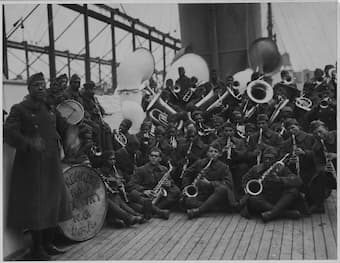
James Reese Europe returning to the US
with his 15th New York band
Although we associate ragtime music with composers such as Scott Joplin and Joseph Lamb, we rarely consider what effect this new musical style might have had internationally. Through performers such as Jelly Roll Morton and band leaders such as W.C. Handy and James Reese Europe the music emerged from the bordellos and into mainstream acceptance.
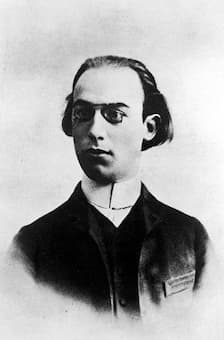
Erik Satie (ca. 1900)
Ragtime moved to Europe on the boats that moved people across the Atlantic, which needed the latest music to entertain their passengers. James Reese Europe’s 369th Regiment band toured France in 1918 to great approval. They made recordings for the French Pathé company, including some syncopated numbers, such as The Memphis Blues, that were credited as starting ‘….ragimitis in France.’
William Christopher Handy: Memphis Blues (ed. B. Haring) (The Americus Brass Band)
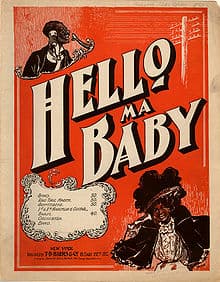
Hello Ma Baby sheet music (1899)
American band leaders such as John Philip Sousa, who toured internationally, also brought American music to other shores. Combining his usual straightforward march tempos with the syncopations and polyrhythms of the new ragtime style brought his music to the latest style.
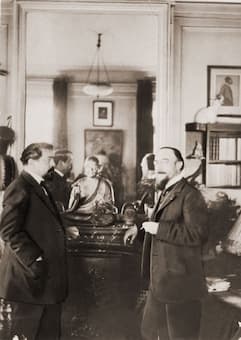
Satie and Debussy in Debussy’s home (1911) (photo by Igor Stravinsky)
Erik Satie (1866-1925) led the French avant-garde in music, anticipating many late 20th century artistic developments such as minimalism. When ragtime turned up, he started incorporating it into his style.
Two works show the influence of ragtime, with its emphasis on syncopation, on Satie. The first was in his 1900 work La mort de Monsieur Mouche (The Death of M. Mouche). It was originally written as incidental music for a 3-act play by Satie’s friend, the Spanish poet Patrice Contamine de Latour, writing as ‘Lord Cheminot.’ All that remains of the incidental music is this Prélude, which is evidence of Satie’s first experiments with ragtime.
Erik Satie: La mort de Monsieur Mouche: Prélude (Nicholas Horvath, piano)
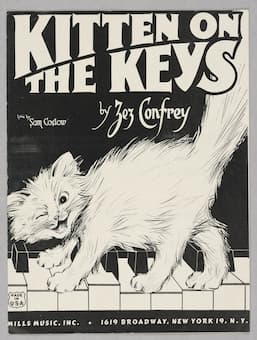
Kitten on the Keys sheet music (1922)
A work from 4 years later, Le Piccadilly, is much more straightforward ragtime march. The original title was La Transatlantique, the nickname for the American heiresses who were flocking to Europe to marry impoverished aristocrats. Some examples include the Princess de Polignac, born Winnaretta Singer of the sewing machine fame. Winston Churchill’s mother, Jennie Jerome, was another of these American ‘dollar princesses.’ The original title memorialized their mode of travel, whereas the new title Le Piccadilly, was more about where they arrived.
Erik Satie: Le Piccadilly (Nicholas Horvath, piano)
You can hear some links in the main theme with an 1899 song, ‘Hello! Ma Baby!’ about that new invention, the telephone, where the beloved is referred to as his ‘ragtime doll.’
Ida Emerson/Joseph E. Howard: Hello, Ma Baby (Joan Morris, mezzo; William Bolcom, piano)
Ragtime had its start in the late 19th century in middle American, in the black communities around St. Louis, Missouri, but by 1900 had become widely popular all across America. As mentioned above, it travelled to Europe and, along with infecting Satie, it also hit Debussy. In his piano piece Le petite negre, we can also hear the influence of the Hello! Ma Baby melody.
Claude Debussy: Le petit negre (The Little Negro) (Alain Planès. Piano
Ragtime faded as the new encompassing style of jazz became the popular favourite. Ragtime was taken over by novelty piano works such as Zez Confrey’s Kitten on the Keys, a work with intentional wrong notes and sudden key shifts that is actually quite difficult to play, particularly at speed.
Zez Confrey: Kitten on the Keys (Eteri Andjaparidze, Piano)
As music goes around the world, each new country takes what it has received and creates its own version. Satie and Debussy’s takes on ragtime are uniquely French, while being at the same time, ragtime.
For more of the best in classical music, sign up to our E-Newsletter


